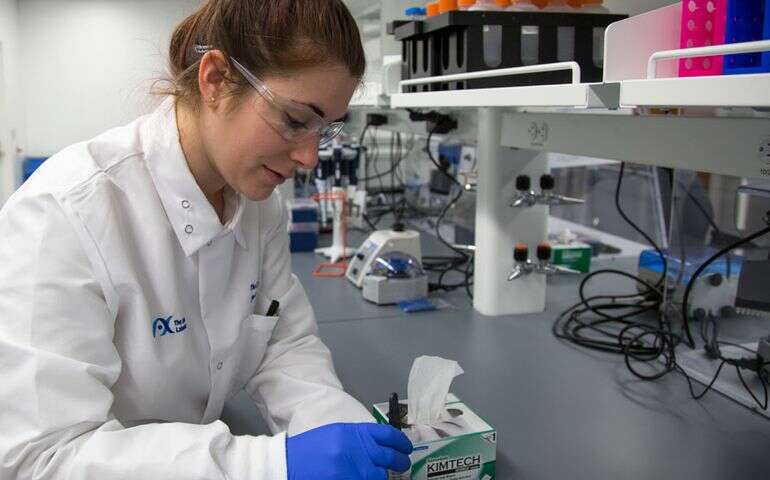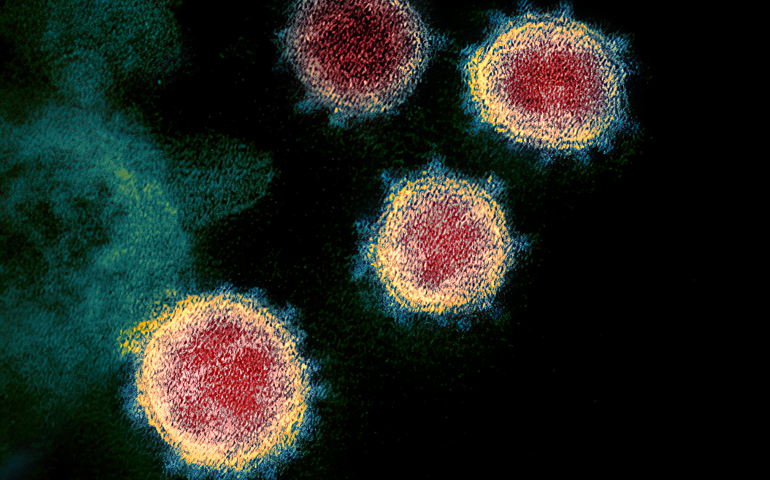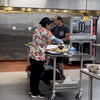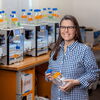
JAX ramps up 'humanized' mouse production for pandemic fight
 COURTESY / NIAID-RML
This electron microscope image shows virus particles of SARS-CoV-2 emerging from the surface of cells in a COVID-19 patient, in a test that was cultured at the JAX lab.
COURTESY / NIAID-RML
This electron microscope image shows virus particles of SARS-CoV-2 emerging from the surface of cells in a COVID-19 patient, in a test that was cultured at the JAX lab.
Jackson Laboratory, headquartered in Bar Harbor, is scaling up production of research mice designed to help scientists around the world develop vaccines and treatments for COVID-19.
On a parallel track, the lab is ramping up its test capacity for COVID-19 infection from 550 tests per day to 20,000 tests per day by early July, for residents of Connecticut, where the lab has a second facility.
The work is being done as new research reveals more information about how the virus attacks multiple organs, and even its ability to attack the immune system itself.
“We’re dealing with a killer and we need to know exactly how the killer works,” said the lab’s scientific director, Nadia Rosenthal.
Rosenthal and the lab’s president and CEO, Edison Liu, offered a virtual presentation Tuesday on studies to date.
Custom mice
In March, the lab announced it was delivering a transgenic mouse model to the world’s research community.
Scientists depend on animal models for the development and testing of safe and effective vaccines as well as antiviral and other therapeutic strategies. However, standard inbred strains of mice are not susceptible to COVID-19 infection, JAX said in a news release.
The virus causes infection by attaching itself to a protein called the ACE-2 receptor. In response to a 2002 outbreak of a related coronavirus called severe acute respiratory syndrome (SARS), researchers at the University of Iowa developed a mouse that carries a gene that encodes the receptor that COVID-19 binds to.
When the COVID-19 crisis arose, it became clear that there would be high and immediate demand for that mouse model. So JAX initiated a large-scale in vitro fertilization program that far extended its capacity to generate the mice by natural mating.
JAX has now generated a new colony of mice that are susceptible to COVID-19 and available to meet the demands of researchers around the world. The lab is increasing production at an unprecedented scale, Rosenthal said, and is also reviewing other mouse models for their potential to advance COVID-19 research.
Typical mouse production involves breeding two mice together to make baby mice. But JAX’s production facility is capable of massive in vitro fertilization of many females, capable of producing 1,500 mice in eight weeks.
This is important, she said, because 250 labs around the world have collectively asked JAX for over 10,000 mice on which they can test vaccines and anti-viral treatments.
Going beyond the first mouse model, she said, JAX is now looking at the life cycle of the virus and the organs it attacks. The lab can tweak the model to become similarly vulnerable, she said.
For example, she said, it’s known that humans with underlying conditions like diabetes are more susceptible to morbidity and mortality from the virus.
Mouse models are now in development to replicate specific vulnerabilities.
“This is an extraordinarily complicated and sophisticated way of turning a mouse into as close to human patients as we can get,” she said.
JAX can accomplish this because the lab has, for many decades, been supplying the world’s scientific community with complex genetic models of human disease at scale in order to get to faster cures, she noted.
Vaccine, treatment
The mice are being used around the world as subjects to test potential vaccines and treatments, said Liu, who arrived at JAX after founding and leading the Genome Institute of Singapore, where he led Singapore's scientific response to the 2003 SARS crisis.
Until a vaccine or antiviral therapeutic is developed, the world must rely on preventative measures, said Rosenthal.

The question is to how to achieve a therapeutic as quickly a possible: Key to the process is attaining a thorough knowledge of the virus, she said.
Research to date has revealed that, although the virus enters predominantly through the respiratory system, it also affects other organs. Most recently, she said, the virus has been found to have a detrimental effect on the immune system.
Four vaccines are currently competing to enter testing protocols, said Liu.
Issues of concern, he said, include the possibility that a vaccine might actually accentuate the morbidity of a disease once a patent is exposed to it.
Another is something of a paradox: In order to test a vaccine, individuals are needed who are not infected but might be susceptible to infection. The paradox, he said, is that as social distancing policies and personal protective equipment are adopted, there are ever-fewer cases of COVID-19 infection. That’s good news, he said, but makes it difficult to understand whether a given vaccine will work or not — and it’s unlikely that the virus will disappear without a vaccine.
Humanized mice can be a valuable platform for testing multiple vaccines in a way that’s impossible in human populations, noted Rosenthal.
While the mouse is not a human, it’s a good place to start, added Liu.
Global mortality in confirmed cases is between 4% and 6%, he said; individuals over age 70 have a mortality rate of 10% to 40%. Testing and contact tracing are fundamental to controlling the virus, especially because infected individuals can be asymptomatic, he explained.













0 Comments